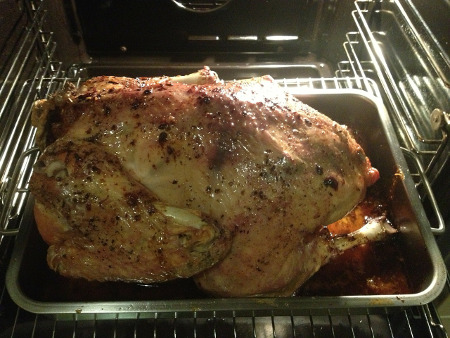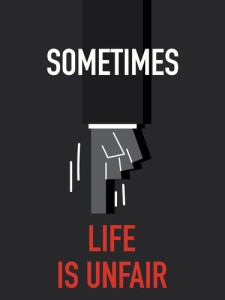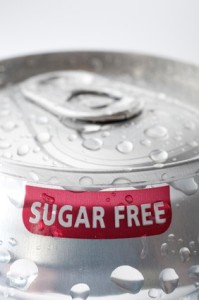Overweight Vs. Obesity
Author: Dr. Stephen Chaney
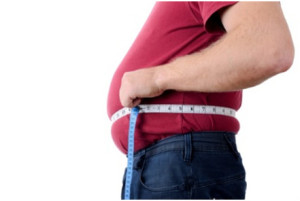 Are you skinny fat? Weight loss season is upon us. Many of you are jumping on your bathroom scales so that you can decide how much weight you need to lose this year. For some the motivation for these New Year’s resolutions to lose weight is purely cosmetic. You just want to look better. For others the motivation for losing weight is better health. Obesity is a killer. It is associated with increased risk of diabetes, heart attack and stroke – and that’s just the tip of the iceberg.
Are you skinny fat? Weight loss season is upon us. Many of you are jumping on your bathroom scales so that you can decide how much weight you need to lose this year. For some the motivation for these New Year’s resolutions to lose weight is purely cosmetic. You just want to look better. For others the motivation for losing weight is better health. Obesity is a killer. It is associated with increased risk of diabetes, heart attack and stroke – and that’s just the tip of the iceberg.
But what if your bathroom scale says that you are normal weight? Are you off the hook? Maybe not. A recent study suggests that if you are normal weight but have central obesity (a fancy scientific term for belly fat), you are more likely to die prematurely than someone with normal fat distribution regardless of how overweight they are. That’s a pretty scary thought. It has even generated a new risk category called “skinny fat”.
How Can You Be Obese Without Being Overweight?
In recent years there has been some controversy about the health risks of obesity. Part of that controversy has arisen because obesity can be defined in multiple ways. Most of us simply hop on the scale and rely on actuarial tables to tell us what a healthy weight is for our height. Scientists, on the other hand use two very different measures of obesity.
#1 is Body Mass Index or BMI.BMI is a person’s weight in kilograms (kg) divided by his or her height in meters squared. By this measure:
- Normal body weight is defined as a BMI of 18.5-24.9 kg/m2.
- Overweight is defined as a BMI of 25-29.9 kg/m2.
- Obesity is defined as a BMI of ≥30 kg/m2.
#2 is waist to hip ratio or WHR. WHR is a measure of central adiposity (belly fat). By this measure:
- Obesity is defined as excess central adiposity (excess belly fat), which is a waist to hip ratio ≥0.85 in women and ≥0.90 in men.
In general BMI and WHR correlate. However:
- 11% of men and 3.3% of women are normal weight according to BMI measurements, but have excess belly fat according to WHR measurements.These are the individualswho are obese according to their WHR measurements without being overweight according to their BMI measurements. These are the individuals often referred to as “skinny fat”.
- There are similar percentages of men and women who are overweight or obese according to BMI measurements, but have low WHR measurements. These are often referred to as “pear shaped” obese individuals to distinguish them from the “apple shaped” obese individuals with a lot of belly fat.
Being Skinny Fat Can Kill You
 Numerous studies have shown that “apple shaped” obesity is much more likely to be associated with disease and premature death than “pear shaped” obesity, but there have been very few studies comparing health outcomes for normal weight individuals who have excess belly fat (people who are “skinny fat”) with health outcomes of overweight and obese individuals. This study (Sahakyanet al, Annals of Internal Medicine, 2015 Nov 10 doi: 10.7326/M14-2525) was designed to fill that void.
Numerous studies have shown that “apple shaped” obesity is much more likely to be associated with disease and premature death than “pear shaped” obesity, but there have been very few studies comparing health outcomes for normal weight individuals who have excess belly fat (people who are “skinny fat”) with health outcomes of overweight and obese individuals. This study (Sahakyanet al, Annals of Internal Medicine, 2015 Nov 10 doi: 10.7326/M14-2525) was designed to fill that void.
These scientists analyzed data from the National Health and Nutrition Survey III (NHANES III). NHANES III collected BMI, WHR and health data from 15,184 Americans (52.8% women) aged 18 to 90 years (average age 45) and followed the study participants for 14.3 years. By that time 3222 of them had died, with 1413 of those deaths being due to heart disease. The results were enlightening:
- Normal weight individuals with excess belly fat (“skinny fat” individuals) were 1.5 – 2.0 fold more likely to die during the 14.3 year follow up period than individuals who were normal weight and had little belly fat (“skinny lean” individuals). This was expected because this had been shown in several previous studies.
- However, the surprising finding was that normal weight individuals with excess belly fat were also more likely to die than individuals who were overweight or obese. Specifically:
- Men who were “skinny fat” were 2.2 – 2.4 fold more likely to die prematurely than men who were either overweight or obese, but did not have excess belly fat (men with a “pear shaped” fat distribution). “Skinny fat” women were 1.3 – 1.4 fold more likely to die prematurely than overweight or obese women with “pear shaped” fat distribution.
- Men who were “skinny fat” were even slightly more likely to die prematurely than overweight or obese men with excess belly fat (men with “apple shaped” fat distribution). “Skinny fat” women were just as likely to die as overweight or obese women with “apple shaped” fat distribution.
- When they looked at deaths due to cardiovascular disease the results were essentially the same.
- These results were novel and should, perhaps serve as a wake-up call for normal weight individuals with excess belly fat.
The authors concluded:
- “Our analysis of data…show that normal-weight U.S. adults with central obesity [excess belly fat] have the worst long-term survival compared with participants with normal fat distribution, regardless of BMI category.”
- “To our knowledge, our study is the first to show that normal-weight central obesity, measured by WHR, is associated with an increased risk of cardiovascular mortality.”
- “Our findings suggest that persons with normal-weight central obesity may represent an important target population for lifestyle modification and other preventative strategies.”
Why Is Being Skinny Fat So Dangerous?
 As the authors of this study pointed out, it is well established that excess belly fat is associated with:
As the authors of this study pointed out, it is well established that excess belly fat is associated with:
- Insulin resistance, which can lead to diabetes and predispose to heart disease.
- High triglycerides and high levels of “bad” cholesterol, which can lead to heart disease.
- Inflammation, which can lead to a number of deadly diseases.
The metabolic effects of excess belly fat are sufficient to explain why someone who is “skinny fat” is more likely to die prematurely than someone who is “skinny lean”. However, the effect of excess belly fat is not sufficient by itself to explain why a “skinny fat” individual is more likely to die prematurely than someone who is overweight or obese.
To understand this we need to recognize that both fat and muscle contribute to body weight (and to BMI). The “skinny fat” individual has more fat mass AND less muscle mass than a “skinny lean” individual of the same weight. That is a huge factor because metabolically speaking muscle is protective. It opposes all of the bad metabolic effects of belly fat.
Simply put, being “skinny fat” is extremely dangerous because you have increased all the bad metabolic effects of excess belly fat, ANDyou have decreased the protective metabolic effect of muscle mass.
How Do You Go From Being “Skinny Lean” To “Skinny Fat”?
Most of us were lean in our younger years. For those of us who end up as “skinny fat” as we age, it is pretty obvious that there are two processes going on simultaneously.
#1: Loss of Muscle Mass:It would be easy to say that becoming “skinny fat” is a natural part of aging. The natural tendency is to loose muscle mass and replace it with fat mass as we age. If we “just go with the flow” all of us will end up being “skinny fat” at some point. However, the loss of muscle mass as we age is accelerated by our sedentary lifestyle and our diet (more on that below).
#2: Gain of Belly Fat:To some extent whether we store excess fat as “pears” or “apples” is genetically determined. However, what we eat can also exert a major influence. For example:
- Alcohol: The term “beer belly” says it all. Excess alcohol consumption is associated with an increase in belly fat. Once you understand the metabolism of alcohol the explanation is pretty simple. Alcohol causes blood sugar to drop, which increases appetite. Alcohol also interferes with our judgement, which can cause us to make poor food choices.
- Excess saturated fat tends to be stored preferentially as belly fat.
- Excess sugars and simple carbohydrates are rapidly converted to fat stores and stored as belly fat.
What Can You Do If You Are Already Skinny Fat?
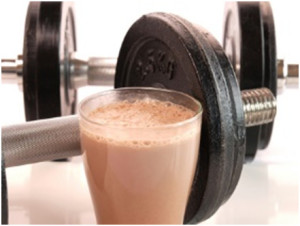 Let’s start with what you shouldn’t do. You should not go on a reduced calorie weight loss diet to get rid of your excess belly fat. The last thing you want to do is to end up being underweight with excess belly fat! Here is what you should do:
Let’s start with what you shouldn’t do. You should not go on a reduced calorie weight loss diet to get rid of your excess belly fat. The last thing you want to do is to end up being underweight with excess belly fat! Here is what you should do:
#1: Increase Your Muscle Mass:I said that loss of muscle mass was a natural part of aging. I didn’t say that it was an inevitable part of aging. If you want to prevent or reverse loss of muscle mass you need to:
- Get really serious about exercise. I’m talking about 30 minute workouts at least 3-5 times per week. These workouts need to include strength training as well as aerobics and flexibility exercises. I would suggest you ask your health professional what kind of exercise program is best for you and start your exercise program under the guidance of a personal trainer or physical therapist.
- Make sure that your diet contains enough protein and enough of the essential amino acid leucine to maximize the gain of lean muscle mass following your workouts. I have covered the latest age-appropriate recommendations in, leucine and muscle gain, a previous “Health Tips From The Professor.”
#2: Lose Your Belly Fat:To some extent you will start to lose your belly fat naturally if you follow the recommendations above. In addition, you will want to:
- Drink alcohol in moderation.
- Make food choices that allow you to replace saturated fat with monounsaturated fat and polyunsaturated fats, especially the omega-3 polyunsaturated fats.
- Replace excess sugars and simple carbohydrates with complex carbohydrates from fresh fruits and vegetables along with modest amounts of whole grain foods.
The Bottom Line
- A recent study has shown that being “skinny fat” (having normal body weight, but excess belly fat) is more likely to result in premature death than if you were overweight, or even obese.
- The most likely explanation for this alarming statistic is that someone who is “skinny fat” has excess belly fat, which predisposes to a number of diseases, and a loss of muscle mass, which protects against those same diseases.
- If you are overweight or obese, you need to reduce your caloric intake to lose weight. However, if you are “skinny fat”, you don’t want to reduce your caloric intake. You need to change your exercise and diet habits.
- Loss of muscle mass and gain of fat mass is a normal part of aging. However, you can slow or reverse the age-related loss of muscle mass with an exercise program and enough protein and leucine in your diet to maximize the effects of that workout program (details above).
- You can prevent or get rid of excess belly fat by:
- Following the exercise program and nutritional support of that exercise program described above.
- Making food choices that replace saturated fats with monounsaturated fats and polyunsaturated fats, especially omega-3 polyunsaturated fats.
- Replacing foods high in sugar and simple carbohydrates with fresh fruits and vegetables and whole grains in moderation.
These statements have not been evaluated by the Food and Drug Administration. This information is not intended to diagnose, treat, cure or prevent any disease.









